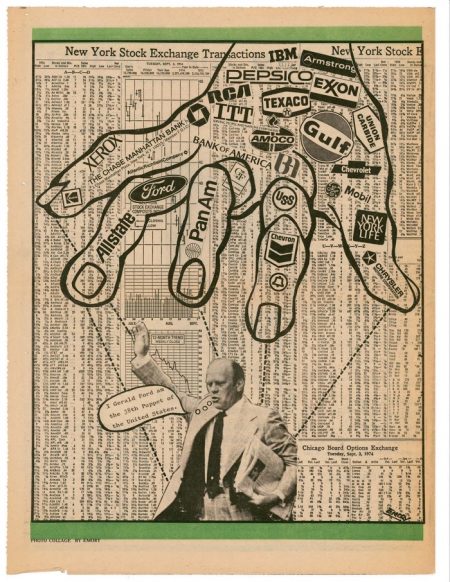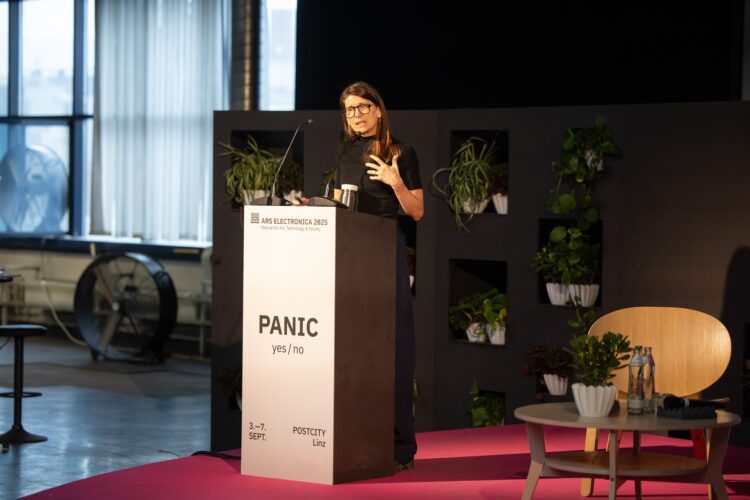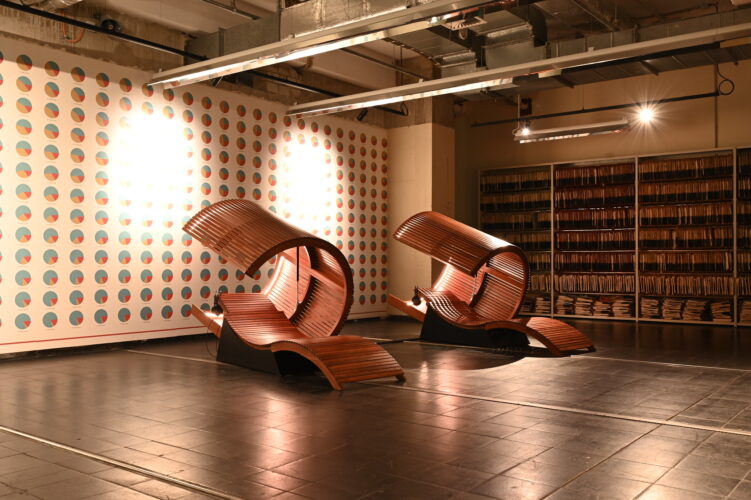Banlieue, territoire-fiction : que retenir de l’exposition au Lavoir Numérique ?




It is with great sadness that we bid farewell to Christine Schöpf—a formative figure in media art and for all of us, without whom Ars Electronica would not be what it is today.
The Ars Electronica Festival 2025 blurred boundaries between art and healthcare, showing how creative practices can power health innovation and re-imagine patient-centred care.
“Perfect Sleep” shows how more sleep can lead to less consumption and CO₂ emissions, thus offering a simple counter-model to the compulsion for growth.
The Ars Electronica Futurelab invites you: Experience the latest works of the artistic R&D laboratory and atelier at the Ars Electronica Festival and collectively shape diverse futures!
Waltzes with artificial intelligence, organ music with robotics, interactive performances, and club nights: the musical program of the Ars Electronica Festival 2025 opens up new realms of experience for its visitors.
Democracy thrives on resistance and participation. At the Ars Electronica Festival 2025, artistic projects will show how protest opens up new spaces, strengthens communities, and creates visions for a shared future.
Theater has always been an art form that combines different media—today, this includes digital technologies. The Ars Electronica Festival 2025 showcases some of the most exciting examples.
“Organism and Excitable Chaos” combines sound sculpture, instrument, and kinetic experiment. The work explores how organic forms, unstable pipes, and a chaotic pendulum open up new possibilities for the interplay between material, sound, and audience.
At the Ars Electronica Festival 2025, artistic works will question the power of global tech corporations, shed light on “surveillance capitalism,” and show how we can reclaim our role in an AI-driven world.
Earlier this month, Rhizome presented Vibe Shift, a two-part event featuring a hackathon and showcase at ZeroSpace in Brooklyn, New York. Organized in partnership with Anthropic, this event sought to explore the creative practice of Vibe Coding, or the practice of using plain language to prompt LLMs like Claude to create executable computer code.
Rhizome has long supported some of the very first artists working online—artists misunderstood for experimenting with new technologies, for troubling canonical standards online and beyond, for treating the internet as a playground. From quantum internet experiments to pigeons that monitor air quality to competitive web surfing, we are committed to platforming art that defies categorization. With that in mind, we convened our communities as well as those of our partners NEW INC, Onassis ONX, and ZeroSpace to explore the nascent creative practice of AI-assisted coding and how artists are responding to these new systems.
Day 1: Hackathon

participants at the hackathon, October 8 at ZeroSpace in Brooklyn, NYC.
We gathered 100 artists from our community and 16 mentors to participate in a one-evening hackathon where they would learn, make, and reflect; participants and mentors were also invited to share their work in a public showcase the following night.
Ploipailin Flynn, co-founder of AIxDESIGN, set the broader context for the night, urging participants to reflect on process over product. She set out a framework of “Slow AI,” prompting those gathered to make things that are “small, weird, and situated.” Everyone was given printed worksheets that asked them to make note of credit usage, intentions, and results.
The hackathon was anchored by a wonderful group of mentors—Chia Amisola, Kevin McCoy, Louise Macfadyen, Will Freudenheim, Don Hanson, Morry Kolman, Paizley Lee, Jamie Wilkinson, Daniel Temkin, Aaron Santiago, Shakti Mb, Saarim Zaman, John Threat, Ploipailin Flynn, Char Stiles, Rox Harris—who provided guidance on how to get started, sharing insight into their practices and how vibe coding can be used to augment, intersect with, or interrogate them.

breakout mentor session during the hackathon, October 8 at ZeroSpace in Brooklyn, NYC.
In a workshop with Chia Amisola, participants learned how to generate bookmarklets to “perform” websites; Morry Kolman walked us through how one might use AI to scrape public data from websites; Kevin McCoy challenged us to vibe code software with a user base of one.
From creating unscalable software, to designing absurd programming languages, to imagining alternative, slower narratives to AI, the evening was a vivid snapshot of artist communities navigating change, and a testament to the continued relevance of artistic perspectives even as tools and contexts shift.

Ploipailin Flynn, co-founder of AIxDESIGN, speaks at the hackathon on October 8 at ZeroSpace in Brooklyn, NYC.

Kevin McCoy, artist, served as a mentor during the hackathon on October 8 at ZeroSpace in Brooklyn, NYC.
Day 2: Vibe Shift Party
The following day we returned to ZeroSpace once again to see the works made during the hackathon, dance to live coded performances, eat cupcakes, scream at the top of our lungs during the vibe code battle, and more!
Showcase
A simulation of a 2-month old baby’s vision. An interactive maze that invites you to “browse the universe.” A rude horoscope. An ambient drone interface inspired by the cosmos of the universe. These are a few of the Claude-powered works on view at Vibe Shift, installed on projections and computers and in a subway car. Along with the exhibited works, participants and mentors also shared work via five-minute presentations for an attentive crowd.
Vibe Code Jam with John Threat/Rip Space

John Threat leads the vibe code battle on October 9 at ZeroSpace in Brooklyn, NYC.

Bethany Crystal and Lyell Hintz compete at the vibe code battle, October 9 at ZeroSpace in Brooklyn, NYC.
There’s a lot that you can do in 8 minutes—
Veteran vibe coders were invited to the stage to see what they could make with Claude in 8 minutes, starting from scratch with an empty prompt. At the end of each round, audience cheers determined a “winner;” drama and hijinks ensued, with emcee John Threat keeping the energy level high.
Paizley Lee made a video game starring a rogue Anthropic employee; Alexander Bricken created an MS Paint clone that turned sketches into 3d objects; Lyell Hintz created an ASCII composition that cascaded all over the screen; Bethany Crystal imagined what Taylor Swift’s campaign website might look like; Xuelong Mu created a visualizer for Pachelbel's Canon; and Char Stiles could not connect to wifi, but still won her round.
Live Coding Performances
The night closed out with a celebration of more traditional creative coding: live coded performances by Roxanne Harris and Char Stiles. Live Coding is the act of writing and editing computer code to generate live music or an audiovisual experience—it emphasizes process and transparency, revealing the code and interfaces the performer uses to generate the sound and visuals in real-time.

participants in a breakout mentor session lead by Char Stiles, October 8 at ZeroSpace in Brooklyn, NYC.
Part 5: Thank you!
Like all of our events, this one could not have been possible without the support and guidance of many people, and our community.
Thanks to Anthropic, NEW INC, Matthew, Aaron, and Toups at Onassis ONX for everything from last-minute tech support, to encouraging members of your community to take part in the hackathon!
Thanks to the team at ZeroSpace: Jae Shin, Xuelong Mu, Hanzo, Josh Pitts, and Audrey Perera.
Thank you to all of our hackathon participants who presented works: Audrey Chou, Elizabeth Lin, Jenn Scheer, Lord Fascinator, Jackie Neon, Kalinda Panholzer, Jason Isolini, dotsimulate, Noah Eisenbruch, Mariel Martinez Estevez, Isaac Sante, Dahlia Bloomstone, Aarati Akkapeddi, Shayla Lee, Adelle Yingxi Lin, Morry Kolman, and Shristi Singh.
Thank you to our presenters Ploi Flynn, Daniel Temkin, Chia Amisola, Don Hanson, Paizley Lee, Jason Isolini, Morry Kolman, Brent Cox, Audrey Chou, Amita Shukla, and Shristi Singh.
Thanks to our excellent docents and staff: Jacob, Marin, Kendall, Chuck, Roger, David, Martin Campbell Security, and Tapuz Staffing.
Thanks to our vendors: Perfect Blends catering, Yummy Tummy’s Cupcakes, Brooklyn Food Guild, NA Visitor Beer, Lunar Hard Seltzer.
Thanks to SDN Broadcast for another seamless event!

ZeroSpace

crowd watches the presentations on October 9 at ZeroSpace in Brooklyn, NYC.






In 2008, the electronic artist Max Tundra released an album in the form of a Kosher Chicken noodle soup can. In a recent interview, rapper Soulja Boy revealed that he purposefully mistitled his song Crank That on Limewire, attributing it to prominent Billboard artists such as 50 Cent, Eminem, and Britney Spears, in order to trick users into downloading the song. Years later in 2014, U2 sparked backlash when they released their thirteenth studio album Song of Innocence for free on iTunes—automatically adding it to users’ libraries without their consent.
Since the shift from owned media to streaming rewrote music industry power dynamics, many artists have released music in unconventional ways – but few have gone as far as Wu-Tang Clan. In 2015 they released only one copy of their seventh studio album, Once Upon a Time in Shaolin for $1 million, deleted the master files, put it on a CD, and placed it inside of a silver jewel-encrusted box with a wax Wu-Tang Clan seal. The terms established by the group—that it must remain private, free and non-replicable—meant that it could not be uploaded, streamed or downloaded online. In doing so, the group hoped to raise its value to that of fine art, and “inspire urgent debates about the value of music” in a world where streaming is so ubiquitous the very act tends to water down its value.
This begs the question, how do you experience an album that has only one copy in the world; whose online existence is forbidden?
For their 7x7 presentation this year, Spencer Harrison, Artistic Director of PleaserDAO, who purchased the album in 2021, and Máuhan M Zonoozy, entrepreneur, designer, and conceptual artist, set out to answer this question with a series of truly out-of-the (silver jewel-encrusted) box solutions.
(Note: by reading past this point, you agree to be bound by the project’s NDA. If you consent you may scroll further. This is definitely legally binding and would for sure hold up in court.)
Some of their solutions:
A spring-loaded shoe with a subwoofer so you can “feel the music in your sole.”
A semi-autonomous ride share experience where the album is embedded inside of the speaker system.
A dual-purpose private listening helmet that is NASA certified to go to space.
While the pair ultimately went in a different direction, all of the above prototypes provide private, free and non-replicable forms of listening. Using the law as their source material to create from, see how the pair transforms a New York City phone booth into a private listening experience.
This year’s 7x7 was copresented by Rhizome and Backslash at Cornell Tech. Watch other presentations from this year's conference.

Guests of the rhizome 2025 Benefit listening to Once upon a time in Shaolin on a custom speaker designed by Emmett Palaima. Guests had to put their phones in a sealed magnetic pouch that required a special magnet to be opened. Photo by Alexey Kim/ Sidewalkkilla.






Carlo Bramanti finds the connections between design and conspiracy theory so compelling that he coined a term for the common ground that they share: Conspiratorial Design


The Ars Electronica Festival 2025 blurred boundaries between art and healthcare, showing how creative practices can power health innovation and re-imagine patient-centred care.
“Perfect Sleep” shows how more sleep can lead to less consumption and CO₂ emissions, thus offering a simple counter-model to the compulsion for growth.
The Ars Electronica Futurelab invites you: Experience the latest works of the artistic R&D laboratory and atelier at the Ars Electronica Festival and collectively shape diverse futures!
Waltzes with artificial intelligence, organ music with robotics, interactive performances, and club nights: the musical program of the Ars Electronica Festival 2025 opens up new realms of experience for its visitors.
Democracy thrives on resistance and participation. At the Ars Electronica Festival 2025, artistic projects will show how protest opens up new spaces, strengthens communities, and creates visions for a shared future.
Theater has always been an art form that combines different media—today, this includes digital technologies. The Ars Electronica Festival 2025 showcases some of the most exciting examples.
“Organism and Excitable Chaos” combines sound sculpture, instrument, and kinetic experiment. The work explores how organic forms, unstable pipes, and a chaotic pendulum open up new possibilities for the interplay between material, sound, and audience.
At the Ars Electronica Festival 2025, artistic works will question the power of global tech corporations, shed light on “surveillance capitalism,” and show how we can reclaim our role in an AI-driven world.
In response to the climate crisis and pressing societal challenges, the Ars Electronica Festival 2025 invites radical reimagining and cultivates spaces where visionary creativity and sustainable lifestyles can thrive.





“Perfect Sleep” shows how more sleep can lead to less consumption and CO₂ emissions, thus offering a simple counter-model to the compulsion for growth.
Democracy thrives on resistance and participation. At the Ars Electronica Festival 2025, artistic projects will show how protest opens up new spaces, strengthens communities, and creates visions for a shared future.
Theater has always been an art form that combines different media—today, this includes digital technologies. The Ars Electronica Festival 2025 showcases some of the most exciting examples.
“Organism and Excitable Chaos” combines sound sculpture, instrument, and kinetic experiment. The work explores how organic forms, unstable pipes, and a chaotic pendulum open up new possibilities for the interplay between material, sound, and audience.
At the Ars Electronica Festival 2025, artistic works will question the power of global tech corporations, shed light on “surveillance capitalism,” and show how we can reclaim our role in an AI-driven world.
In response to the climate crisis and pressing societal challenges, the Ars Electronica Festival 2025 invites radical reimagining and cultivates spaces where visionary creativity and sustainable lifestyles can thrive.
Manuela Naveau, curator of the Kunstuni Campus at the Ars Electronica Festival and university professor of Critical Data / Interface Cultures, talks about noisy sliding doors on Linz’s main square—and what this installation has to do with Einstürzende Neubauten, Beyoncé, and Hannah Arendt.
Launched in 1979 as a daring experiment, Ars Electronica has developed over 46 years into a global ecosystem—characterized by continuous change, collaborative thinking, and the ambition to actively shape the future.
Art transforms uncertainty into creative energy and opens up new perspectives on society and the future. The Ars Electronica Festival 2025 shows how artistic works reflect technological, social, and ecological upheavals.





